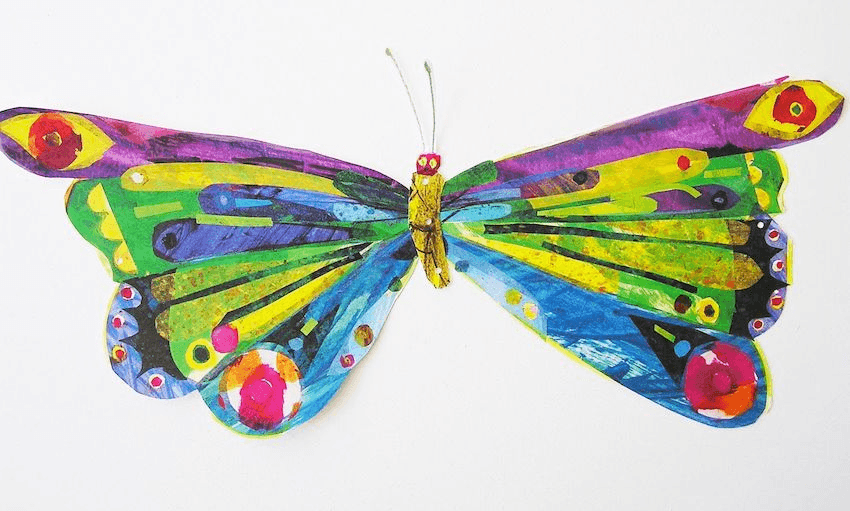News broke yesterday that genius author-illustrator Eric Carle died last week, aged 91. Angela Cuming explains what his most famous book means to her boys.
The Very Hungry Caterpillar came into our lives seven years ago on a cold and grey day in Northern Ireland. We were living there with our first born, Charlie, who was then a fussy baby who could only be soothed by being read to. I had found a near-new copy at the local charity shop and took it home, curious to see if the book my late father had read to me as a little girl would find a keen audience with my own child.
Charlie immediately loved it. It was our book to soothe him to sleep, to make him laugh on busy mornings, to teach him the days of the week and names of colours and shapes, to comfort him when he was ill.
There were other Eric Carle books, too. Brown Bear, Brown Bear, What Do You See?; The Mixed-Up Chameleon; Papa, Please Get the Moon for Me. Charlie loved them all.
But it was the Caterpillar that he loved best, so it came home with us to New Zealand, Charlie now a big brother to identical twin baby boys.
Unbeknown to us at the time, the twins were each in possession of beautiful autistic brains, and their way of experiencing the world – and books – was a lot different to most other children.
But they were drawn to the Caterpillar. They thumbed through the book, pressing their faces up against the illustrations and squinting their eyes, as if to drink in all the colours and shapes in their own unique way. They would trace their fingers over the cut-out holes on the pages, or “read” the story from back to front.
As the twins grew older, and an official diagnosis forthcoming, the Caterpillar played an important role in helping them make sense of a world not designed for them. A copy was kept upstairs in a quiet room, and when an autistic meltdown was coming, we would gently lift Tommy or Henry up and into the sanctuary of a calm space, softly retelling the story of their favourite Caterpillar over and over again until the storm passed. Now they say “upstairs book’’ when they are feeling overwhelmed and they march upstairs to find the dog-eared copy of their beloved book, sinking back into its pages with an easiness that comes with familiarity of an old, trusted friend.
The Caterpillar was there as the twins began speech and language and occupational therapy: in the shape of a giant floor jigsaw puzzle that taught them key motor and problem-solving skills. It was at the hospital, first when Henry broke his elbow, then later when Tommy broke his arm, when a Caterpillar puppet helped to take their minds off the beeping medical machines and bright lights and X-rays. Framed prints of the Caterpillar and the Beautiful Butterfly now hang on their bedroom wall, a source of continual comfort at nap time.
Their neurodivergent brains are always exploring different ways to enjoy the Caterpillar’s story. Tommy will open the book and “jump” into the pages and a world of make believe that my boring neurotypical existence will never fully understand. Henry will find the animated version of the story on YouTube and watch it again and again and again. Sometimes I will find one apple and five oranges in a perfectly straight line on the kitchen floor. When they start school later this year the book will be in their classroom, teaching them phonics and spelling.
This is not a glowing obituary for a celebrated author. Those will be written by others. I have no insight into Eric Carle’s life, nor analysis of what his books really mean, nor a funny anecdote about meeting the great man in real life.
This is just a story about three little boys who have found a great deal of joy and comfort in a story about a caterpillar who grew up and found its wings.
And I would like to say thank you.



